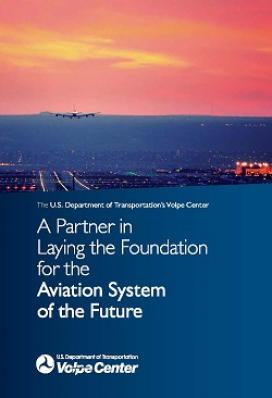Here’s How Volpe Helps FAA Lay the Foundation for the Aviation System of the Future
The U.S. DOT’s Volpe Center helps the Federal Aviation Administration (FAA) design, develop, and deploy the air traffic management system of the future. In partnership with FAA and other key stakeholders, the U.S. DOT’s Volpe Center is applying its expertise in:
Safety Management
Volpe’s aviation safety management systems experts provide systems engineering and analysis, operations research, and information technology expertise to enhance aviation safety. Volpe engineers provide technical and risk analysis expertise on aviation and aerospace safety issues.
Volpe also has multidisciplinary, multimodal teams of engineers and technology, policy, and data analysts working with partners at FAA, the Department of Defense, NASA, and other agencies to advance integration of unmanned aircraft into the national airspace—because safe, efficient introduction of UAS into the national airspace is a shared responsibility.
Engineering
Volpe Center engineers and information technology specialists test the vulnerabilities and efficacy of cyber-intrusion detection devices for vehicle telematics and wireless systems, develop guidance on selecting cybersecurity mitigation solutions, and help efforts to raise awareness of the responsibility for managing risk related to cybersecurity.
Operations
Volpe is playing a significant role in determining how the national airspace must evolve to comply with international provisions for exchanging consistent and unambiguous information on global flight operations. A Volpe team also supports FAA’s Space Vehicle Operations program by exploring ways to reduce the impact of space vehicles on routine air traffic operations.
Volpe has been a key partner in helping FAA develop and deploy Automatic Dependent Surveillance-Broadcast (ADS-B), a highly accurate and reliable system for tracking aircraft in national airspace. It combines Global Positioning System (GPS) data with aircraft identification and altitude information. By transitioning from radar technology to a much more precise global satellite network, flights will be even safer and more efficient.
Human Factors
Volpe’s aviation human factors experts focus on how pilots and air traffic controllers access, share, display, and use information. They examine how human factors considerations will change with FAA’s NextGen air traffic modernization efforts, and how new systems can be designed to maintain or improve safety.
Environmental and Energy Technologies
In support of FAA, NASA, and the International Civil Aviation Organization (ICAO) Committee on Aviation Environmental Protection (CAEP), the Volpe Center is leading the design, development, maintenance, training, and user support of the Aviation Environmental Design Tool (AEDT). AEDT calculates noise, fuel burn, and emissions during ground and flight operations across various scales: individual flights, airport, regional, national, and global levels.
Learn more in this new brochure about Volpe’s aviation capabilities and support to FAA and the entire aviation enterprise.

